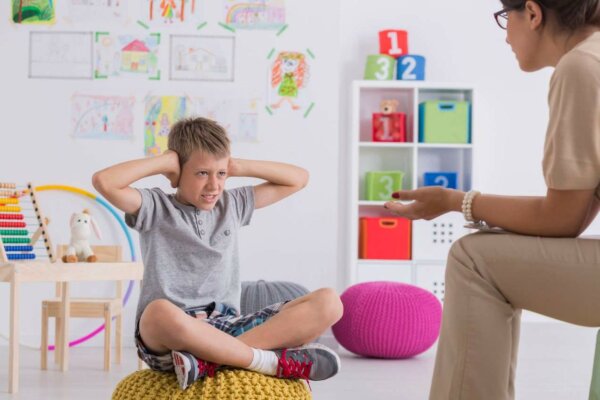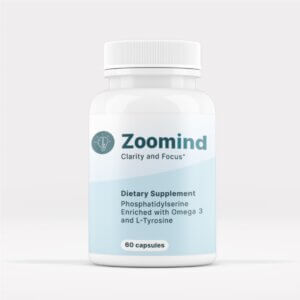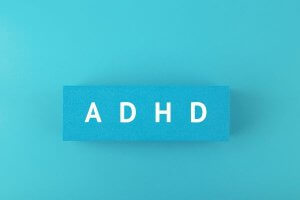Perhaps our title for this article is misleading, because there are actually two different ways in which any question about an ADHD classroom can be framed.
Question 1 – In what type of classroom does a person with ADHD learn best?
Question 2 – What kind of classroom is most beneficial for a person with ADHD?
The differences are subtle but very real and they can make substantial differences to your own decision when it comes to choosing from the options available to you. Basically, it comes down to whether the only thing that your child goes to school for is to acquire some academic learning, or is s/he going to become a person who can adjust despite the disorder, and function well in the wider world.
Does a Child Go to School Only to Learn?

The COVID-19 pandemic has brought focus to the issue of what schooling really means for children. When formal schooling had to switch to internet learning, the socializing and interactions of the classroom and playground were lost. Almost universally, educators and scientists are telling us that children didn’t forgo just a level of academic progress but they also suffered from social deprivation.
Schools do many things besides teaching. Sociologist Emily Rauscher of Rutgers University writes “We have schools for a lot of reasons. They do a lot of things for us, for individuals and for our society. They help kids learn skills like, reading, writing, math and the ability to think critically, to see things from multiple views so when they grow up they can make informed decisions. Schools do other things too. They help kids learn social skills, to get along with others, and learn how to talk with authority figures like teachers …. and schools provide a sense of community.”
The University of California at Berkeley recently published their analysis of the results of research in neuroscience, developmental and learning sciences, education, sociology, and many other fields. One of the findings was that “learning is social, emotional, and academic. Positive relationships, including trust in the teacher, and positive emotions, such as interest and excitement, open up the mind to learning. Negative emotions, such as fear of failure, anxiety, and self-doubt, reduce the capacity of the brain to process information and learn. Children can build skills and awareness to work with emotions in themselves and their relationships.”
Does Having ADHD Make a Difference in How Children Learn?
While we recognize that a difference does not mean a disability, there is generally agreement both by doctors and by educational authorities that children with the disorder do experience their learning differently, and there are some adjustments that need to be made in the environment and in the methodology. The Learning Disabilities Association of America writes that “although ADHD is not considered a learning disability, research indicates that from 30-50 percent of children with ADHD also have a specific learning disability, and that the two conditions can interact to make learning extremely challenging.”
Question 1 – In What Type of Classroom Does a Person with ADHD Learn Best?
The US Department of Education has published a comprehensive guide for how teachers should conduct their activities in mixed classrooms. Apart from the many specific points that it makes, one of the most important is to “Avoid bringing attention to differences between ADHD students and their classmates.” Most of the features that are recommended as beneficial to ADHD students are equally good for the whole class. As it says in the guide “It should be emphasized that many of the techniques suggested have the additional benefit of enhancing the learning of other children in the classroom who do not have ADHD.”
The most important single feature that will make the classroom more beneficial is to have a teacher who is fully aware of the presence of students with the disorder, and who has been trained in the proper management both of the curriculum and of the environment inside the class. The problem with a formal classroom setting is that it presumes all children need to learn in the same manner. Often children with ADHD need flexibility in how they learn rather than what they learn. For example, they may need to be standing at the desk and able to move around.
An ADHD student displaying impulsivity may not take the time necessary to complete all the work, or rushes through it. Breaking tasks down into parts with different subjects in between helps them slow down and improve the quality of their work.
Children with the disorder tend to try to get the work done and are often instructed that completing a task is more important than getting it right. They become concerned with how much they can produce. Having quality as the priority in the classroom may stop students from rushing through tasks.

Question 2 – What Kind of Classroom is Most Beneficial for A Person with ADHD?
As we said in the introduction, learning is not the sole purpose of schooling. Dr. Sydney S. Zentall, professor of Special Education at Purdue University has written a comprehensive book ADHD and Education. Among other points she makes, she addresses how teachers can help students with inattentiveness in the classroom by making tasks more interesting. Letting them have choice in their assignments, such as choosing projects and books to read means they are more invested. They may not be adhering to the class curriculum, but as we are saying, this should not be the sole purpose of schooling.
It is not uncommon for students with ADHD to get good grades, especially in creative subjects. However, listening and paying attention are boring tasks whether a student is gifted or not. Allowing them to concentrate on high-level tasks like special projects or a leadership role can help with students who struggle with paying attention.
The non-learning features of interactions between teachers and students, and other students and the ones with ADHD, are an essential outcome that determines the value of the classroom environment.
Teachers need to help students with ADHD to regulate their emotions, given that one aspect of the disorder is emotional behavior. Children with ADHD may display overemotional responses not just to bad or frustrating events in their life. Even good things can produce unexpected and disruptive behavior. .
ADHD has an underlying neurological cause. The behavioral problems must be viewed as struggles that are not totally under the control of the child. The school should make deliberate efforts to teach the child appropriate skills, not necessarily part of the regular school curriculum.
Teachers must empathize with the child and react in a proactive accommodation to help the child develop coping strategies for symptoms. They must understand that the student wants to be seen as being as successful as other students. This requires a shift in emphasis to a wider range of activities, not just book learning.
The classroom is a vital part of the child’s life, and it is so important for it to play a positive role. To do this the teacher and the school must be an enabled resource helping to provide support for the students with ADHD.
Do the Educational Authorities Help to Make the ADHD Classroom a Better Environment?
Going again to the Learning Disabilities Association of America analysis, ADHD “can be determined to be a disability under the Individuals with Disabilities Education Act (IDEA), making a student eligible to receive special education services. However, ADHD falls under the category “Other Health Impaired” and not under “Specific Learning Disabilities.” Individuals with ADHD can also qualify for accommodations under the ADA and Section 504 if their ADHD impacts a major life function such as learning.
FAQ
Do Specialized Schools Provide Significant Benefits?
When the limitations of public schools become overwhelming, especially in cases where class size is a factor, or teachers with appropriate skills and training are not available, it may be possible to switch to specialized school accommodations for the child with ADHD. There are several ways in which specialized schools can provide benefits:
Smaller class size

This is probably the most immediate and obvious benefit. Having smaller classes allows the teacher to spend their time in one on one attention. Then, the teacher talks directly to the child evoking their participation in question and answer interactions, making use of appropriate visuals and accessories. Large classrooms are distracting and tend toward sensory overload for children with hyperactivity. At the other end of the scale, children with attention deficit get lost in the noise and their inattention becomes overlooked. This is one of the main reasons why diagnosis of the disorder in girls is often overlooked.
Small classroom size contributes to a quieter atmosphere, which is less distractive. It can also mean closer relationships with the other students, since it encourages them to be supportive of one another. Such social connectivity is an important way that children can learn self-respect as well as consideration for others.
Customized instruction
Children with ADHD struggle to follow instructions. Most of them require a boost to their self-confidence. Teachers will be able to determine how best the child reacts and then customize the program to match. Small schools can make the curriculum more focused on the individual.
Trained teachers
Most specialized schools engage teachers who have undergone additional training beyond the basics. ADHD teacher training interventions have been developed to strengthen teachers’ knowledge about ADHD, train them to create a supportive environment in the classroom, and develop strategies to address problem behaviors.
What is IDEA and How Can an ADHD Classroom Get the Benefits?
The Individuals with Disabilities Education Act (IDEA) requires states and school districts to ensure that eligible students with disabilities receive appropriate special education and related services at no cost to the parents, which is referred to as a free appropriate public education (FAPE) under the IDEA. These students may include those with ADHD.
Section 504 of the Rehabilitation Act prohibits discrimination on the basis of disability in programs or activities receiving Federal financial assistance, including school districts.
Under these laws, a person (including a student) with a disability is one who meets any of the following criteria:
- has a physical or mental impairment that substantially limits one or more major life activities;
- has a record of such an impairment; or is regarded as having such an impairment.
Some examples of a major life activity that could be substantially limited by ADHD include concentrating, reading, thinking, and functions of the brain.
Section 504 also requires that a student with a disability be educated with students without disabilities to the maximum extent appropriate to the needs of the student with the disability and that a student with a disability be educated in the regular education setting unless the district can demonstrate that the education of that student in the regular educational environment with the use of supplementary aids and services cannot be achieved satisfactorily.
The Americans with Disabilities Act Amendments Act (which amended the Rehabilitation Act of 1973), materially broadened the interpretation of the terms that define disability in two ways of particular significance for students with ADHD. First, it expanded the list of examples of major life activities by adding, among other things, concentrating, reading, thinking, and functions of the brain.
Second, the Amendments Act stated that mitigating measures shall not be considered in determining whether an individual has a disability. Mitigating measures include, for example, medications, coping strategies, and adaptive neurological modifications that an individual could use to eliminate or reduce the effects of an impairment. School districts cannot consider the ameliorative effects of mitigating measures when determining how the impairment impacts the major life activities under consideration.
The impact, therefore, of a student’s ADHD on a given major life activity, such as concentrating or thinking, must be considered in the student’s unmitigated state to determine whether a substantial limitation exists. For example, if a student requires medication to address an impairment, the ameliorative effects of the medication cannot be considered when evaluating the student for a disability.
Summary of School Districts’ obligation to identify and evaluate students with disabilities:
- Section 504 requires a school district to identify and conduct an evaluation of any student who needs or is believed to need special education or related services because of a disability.
- A school district must evaluate students who are suspected of having any kind of disability in all specific or all related areas of educational need, even if the students do not fit into one suspected disability category or fit into multiple disability categories.
- Students who achieve satisfactory, or even demonstrate above-average, academic performance may still have a disability that substantially limits a major life activity and be eligible for special education or related aids and services because the school district is not meeting their needs as adequately as the needs of nondisabled students are met.
- Implementation of intervention strategies, such as interventions contained within a school’s RTI program, must not be used to delay or deny the Section 504 evaluation of a student suspected of having a disability and needing regular or special education and related aids and services as a result of that disability.








